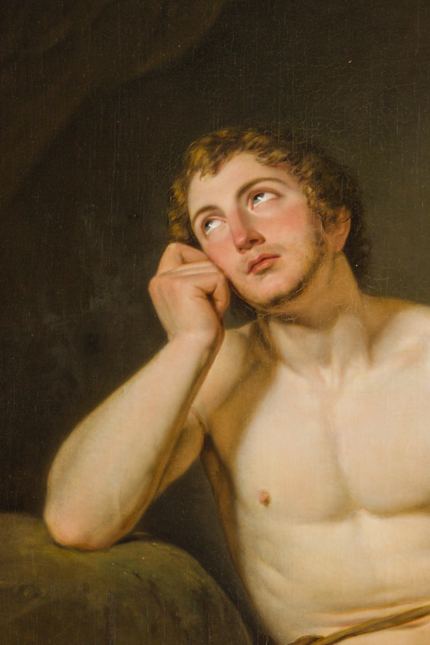 Click for full-size image
Click for full-size imageJOHANNES DE DOPER IN DE WOESTIJN (JOHN THE BAPTIST IN THE DESERT)
Paint on canvas, 120 x 93 cm
Acquired through donation by André en Corinne Masters, Canada, 2014
Around 1819-1820, Kruseman took an important step in his career by painting religious subjects, i.e. the most prestigious specialism in painting. Commissioned by the Amsterdam council member and person of independent means Andries Cornelis Willem Munter (1774-1861), Kruseman made this portrait of the young John the Baptist leaning pensively against a rock.
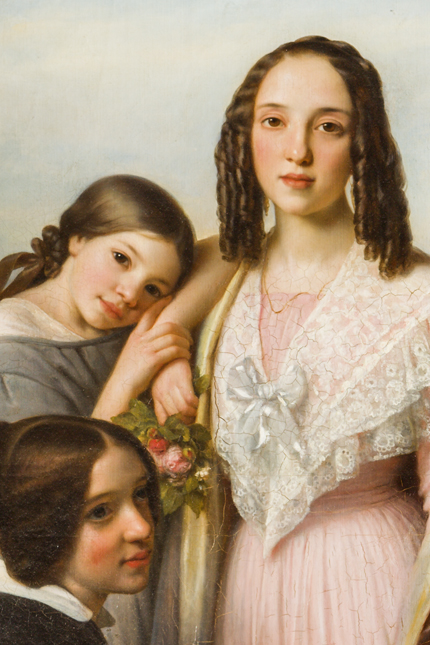 Click for full-size image
Click for full-size imagePORTRET VAN JOHANNA CORNELIA MARIA (1827-1914), HENRIETTA AUGUSTA (1836-1865) EN MARIA JOHANNA JUSTINA (1837-1919) KRUSEMAN (Portrait of JOHANNA CORNELIA MARIA (1827-1914), HENRIETTA AUGUSTA (1836-1865) and MARIA JOHANNA JUSTINA (1837-1919) KRUSEMAN)
Paint on canvas, 160 x 117 cm
Lent from the Cultural Heritage Agency of the Netherlands, Amersfoort
In 1848, Kruseman painted this monumental portrait of the three daughters of his brother Johannes Diederik Kruseman (1794-1861). Johanna Cornelia, the young lady wearing the pink dress, is the grandmother of Ms J.M.C. Ising, who established the Cornelis Kruseman Foundation. Kruseman showed this portrait at the 1848 Exhibition of Living Masters in Amsterdam and the Hague. Here the portrait was well received.
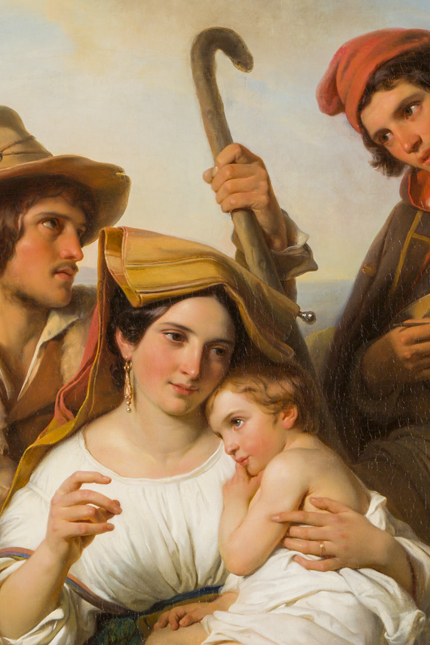 Click for full-size image
Click for full-size imageITALIAANSE VOORSTELLING MET MOEDER EN KIND, HERDER EN VISSER (ITALIAN SCENE of mother and child, sheperd and fisherman)
Paint on canvas, 130,5 x 147,5 cm
Auction in Amsterdam (Christie’s), 6 May 2009, no. 170
During his first visit to Italy from 1821 to 1824, Kruseman found a new subject to paint, i.e. the lives of ordinary Italian people. He made this painting back in the Hague in 1840. In a rural environment, we can see a mother and child. At the left stands a shepherd with a goat, at the right a fisherman playing the mandolin. A smoking volcano, the Vesuvius perhaps, stands proudly in the background.
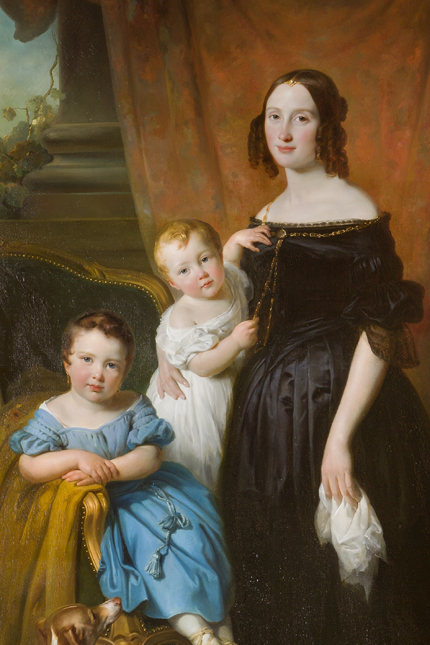 Click for full-size image
Click for full-size imagePORTRET VAN CORNELIA WILHELMINA NICOLA, GEBOREN CHERIEX (1814-1908) EN HAAR DOCHTERS WIJNANDA NICOLA (1837-1921) EN CATHARINA NICOLA (1839-1863) (Portrait of CORNELIA WILHELMINA NICOLA née CHERIEX (1814-1908) and her daughters WIJNANDA NICOLA (1837-1921) and CATHARINA NICOLA (1839-1863))
Paint on canvas, 225 x 148,5 cm
Auction in Amsterdam (Christie’s), 8 May 2015, no. 135
The portrait of Cornelia Nicola-Cheriex and her two daughters is quite extraordinary for more than one reason. It is one of the few monumental family portraits Kruseman painted in full length.
Another striking feature is the portrait showing a young woman from the Hague middle class. In 1836, this daughter of a boot and shoemaker married George Carel Nicola, a baker’s sons.
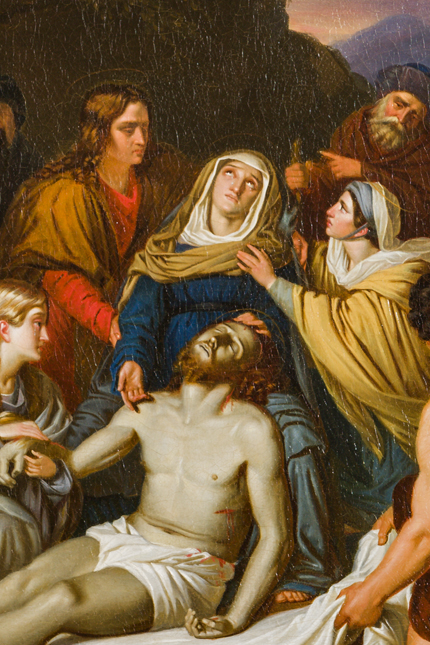 Click for full-size image
Click for full-size imageKOPIE NAAR HET SCHILDERIJ VAN CORNELIS KRUSEMAN
DE GRAFLEGGING VAN CHRISTUS (Copy after cornelis kruseman’s painting called the entombment of christ)
Paint on canvas, 63 x 54 cm
Art dealer Marciano Arte, Portici (Italy), 2011
Kruseman’s pupil Johannes Robertus Post Brants (1811-after 1848) made a copy after the great painting ‘De graflegging van Christus’ (‘the Entombment of Christ’). For centuries, copying after artworks of other masters had been a usual learning method for artists in training. Kruseman encouraged his pupils to make studies of both his paintings and those of the Dutch masters of the seventeenth century. The latter could be found at the building currently known as the Mauritshuis in the Hague.
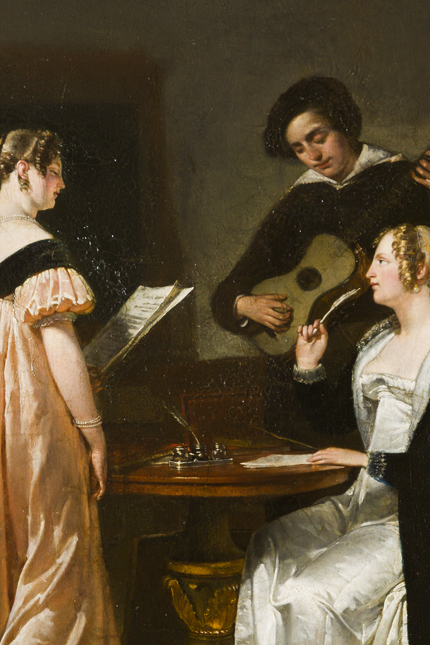 Click for full-size image
Click for full-size imageEEN MUSICEREND GEZELSCHAP (a company making music)
Paint on canvas, 67 x 55,5 cm
Auction in Nijmegen (Hessink’s Auctions), 25 March 2006, no. 5086
This small painting exudes the atmosphere as created by the Dutch masters of the seventeenth century. Kruseman showed this painting at the 1818 Exhibition of Living Masters in Amsterdam. The two young ladies are wearing fashionable clothes with historic details. The young man with the guitar or lute in the background is said to be Kruseman himself (a self-portrait).
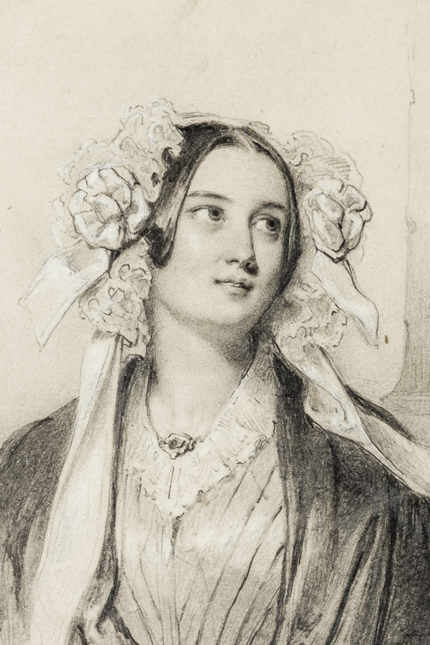 Click for full-size image
Click for full-size imagePORTRET VAN EEN ELEGANTE DAME (portrait of an elegant lady)
Portrait on paper, 220 x 165 mm
Signed ‘C. Kruseman’ (lower right)
Auction in Amsterdam (Christie’s), 2 July 1997, no. 14
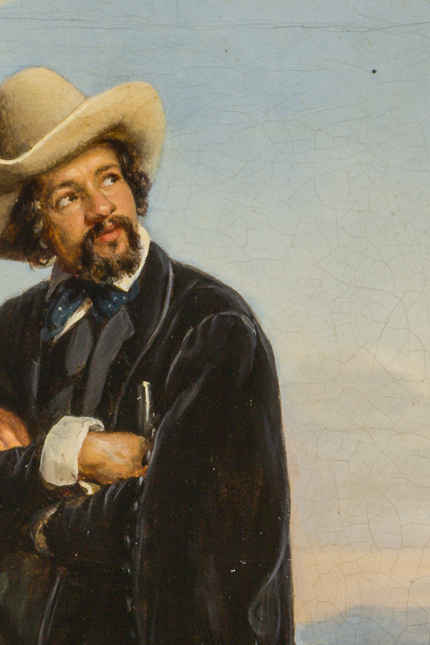 Click for full-size image
Click for full-size imagePORTRET VAN CORNELIS KRUSEMAN IN ITALIË (portrait of cornelis Kruseman in Italy)
Paint on canvas, 27,5 x 23 cm
Lent from the Cultural Heritage Agency of the Netherlands, Amersfoort
In 1841, Kruseman left for Rome for the second time. Here he met several foreign artists, including the German painter Louis Joseph Brüls, who had become a naturalised citizen of Belgium. Brüls made this charming portrait of Kruseman wearing travelling clothes and holding a walking stick.
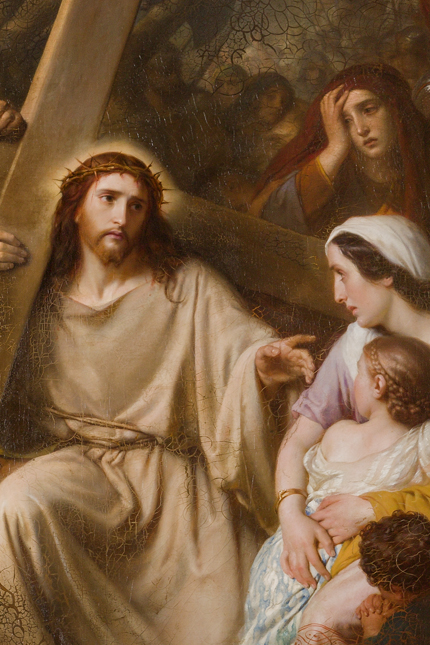 Click for full-size image
Click for full-size imageDE KRUISDRAGING (the bearing of the cross)
Paint on canvas, 300 x 198 cm
Lent from Museum Catharijneconvent, Utrecht
‘The Bearing of the Cross’ is one of Kruseman’s four monumental paintings commissioned by ‘jonkheer’ Jan Elias Huydecoper (1798-1865). ‘The Bearing of the Cross’ was the only painting to be shown abroad. It was exhibited at the 1851 Salon in Brussels, where it was awarded one of the gold medals. In this painting, Kruseman depicted Christ who, tired from carrying the heavy cross, speaks to the weeping women.
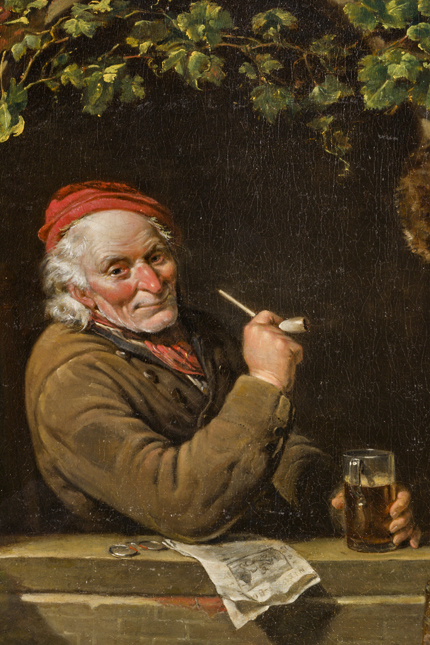 Click for full-size image
Click for full-size imageOUDE MAN MET PIJP IN EEN OPEN VENSTER (old man with pipe in a window)
Paint on canvas, 39 x 31 cm
Auction in Amsterdam (Christie’s), 18 November 2008, no. 125
In 1817, Kruseman showed this charming portrait at the Exhibition of Living Masters in the Hague. At the beginning of his career, the twenty-year-old artist was clearly inspired by the Dutch masters of the seventeenth century, such as – in this case – Frans van Mieris the Elder (1635-1681).
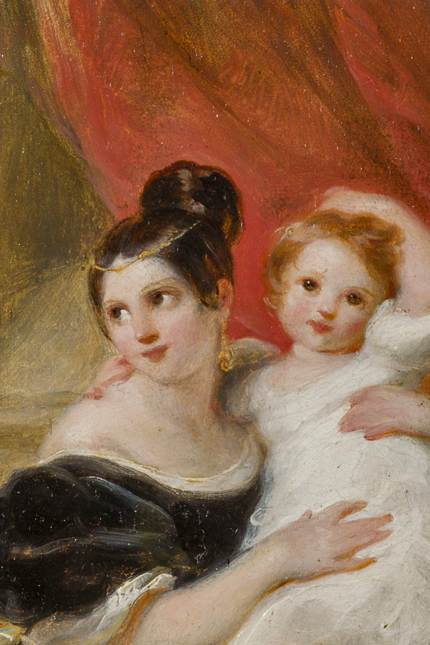 Click for full-size image
Click for full-size imagePORTRET VAN MOEDER EN KIND (Portrait of MOTHER AND CHILD)
Paint on panel, 22,5 x 17,5 cm
Acquired through donation
The revival of the Hague as a royal residence and a centre of government gave renewed artistic fervour and sparked a desire among the ‘new’ Hague elite to create a distinct profile for themselves. As a result, many portraits were being commissioned. During the period 1825-1827 alone, Kruseman painted approximately 45 portraits. This enchanting oil sketch of a mother and child has been set up smoothly and exudes an atmosphere of candidness and intimacy.
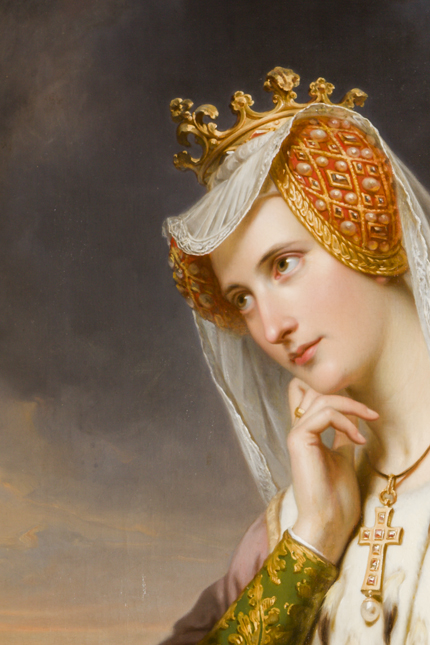 Click for full-size image
Click for full-size imageJACOBA VAN BEIEREN IN OVERPEINZING (JACOBA van beieren in pensive mood)
Jan Adam Kruseman (1804-1862)
Paint on canvas, 95 x 67 cm
Signed and dated ‘JA Kruseman 1847’
Auction in Amsterdam (Sotheby’s), 22 April 2009, no. 19
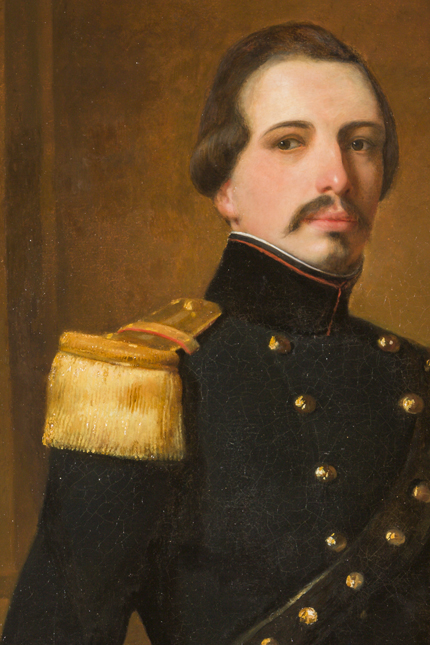 Click for full-size image
Click for full-size imagePORTRET VAN CATHÉRINE GAUTHIER CONSTANT FRANÇOIS ISING (1823-1894) (portrait of CATHÉRINE GAUTHIER CONSTANT FRANÇOIS ISING (1823-1894))
Paint on canvas, 91,5 x 80 cm
Lent from the Cultural Heritage Agency of the Netherlands, Amersfoort
This portrait of Cathérine Gauthier Constant François Ising (1823-1894), the future husband of Johanna Cornelia, was made in the same year as the portrait of the three sisters. The couple married in 1851. Unfortunately, the portrait became severely damaged. After being restored, Kruseman’s contribution is hardly recognisable anymore.
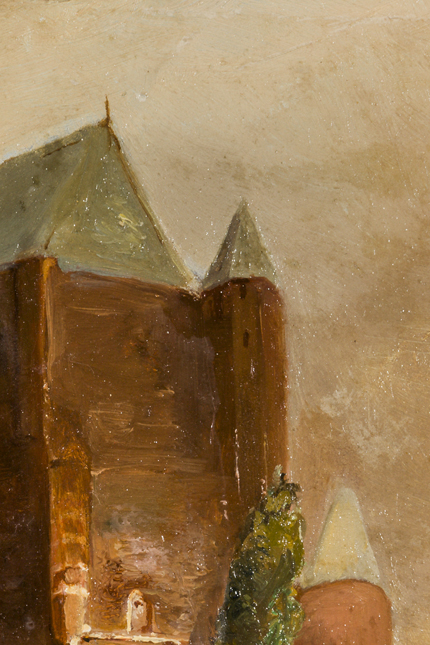 Click for full-size image
Click for full-size imageAMSTERDAMSE POORT TE HAARLEM IN DE WINTER (The AMsterdam gate in HaArlem during Wintertime)
Johan Diederikus Kruseman jr. (1828-1918)
Board, 16,5 x 11,5 cm
Unsigned
Bequeathed by J.M.C. Ising
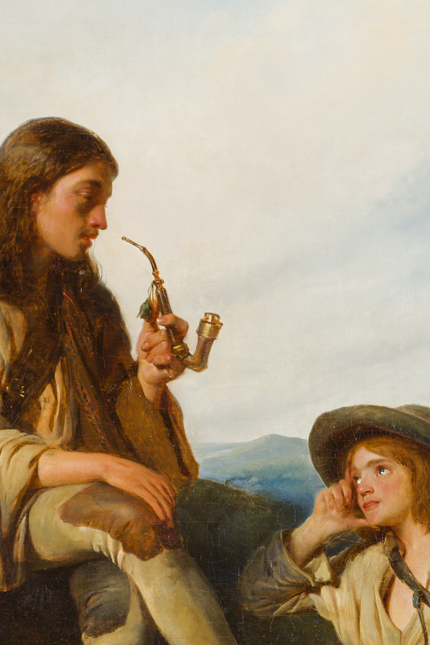 Click for full-size image
Click for full-size imageHONGAARSE MUIZENVALLENVERKOPERS (hungarian sellers of mousetraps)
Paint on canvas, 98 x 84 cm
Auction in Amsterdam (Sotheby’s), 20 April 2004, no. 22
Kruseman showed the painting of these two Hungarian sellers of mousetraps at the prestigious 1841 Salon in Paris. In a mountainous landscape, both young men are having a short rest, enjoying their pipes and a good story. Their merchandise can be seen on the left. After its return from Paris, this work was purchased by Kruseman’s close friend and printer Adrianus David Schinkel (1784-1864).
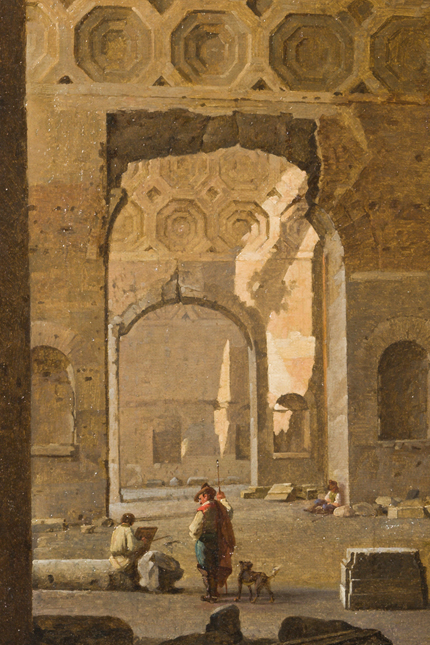 Click for full-size image
Click for full-size imageRUÏNE VAN DE BASILICA VAN MAXENTIUS, ROME (ruin of the basilica of Maxentius, Rome)
Paint on canvas, 47 x 37,2 cm
Signed and dated ‘Kruseman Vervloet Maes 1823’ (right below)
Private collection, Amsterdam, 2010
Although the ambitious Kruseman intended to become a painter of historical pieces, Amsterdam did not provide him with the necessary means. Therefore, the painter left for Rome in September 1821 in order to study works of famous Italian masters such as Michelangelo and Raphael and the classical antiquity.
This painting of the ruin of the Basilica of Maxentius was signed by Kruseman, Vervloet and Maes, an extraordinary cooperative.
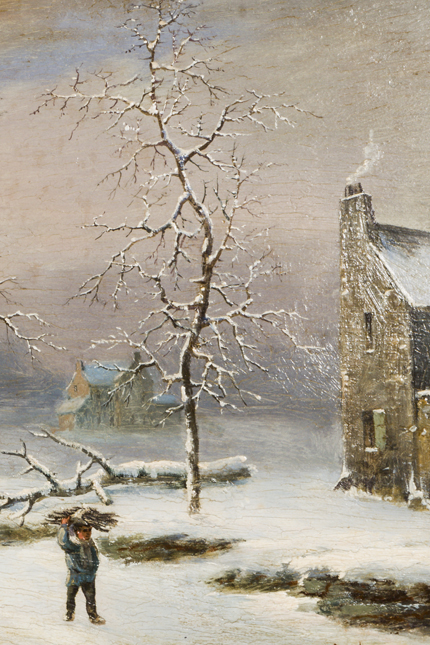 Click for full-size image
Click for full-size imageWINTERLANDSCHAP MET FIGUREN EN KOEIEN (Winterlandscape with people and cows)
Painting on panel, 20,5 x 40,5 cm
Signed ‘C. Kruseman’ (lower right)
Auction in Johannesburg (Stephan Welz & Co), 31 July 2006, no. 349
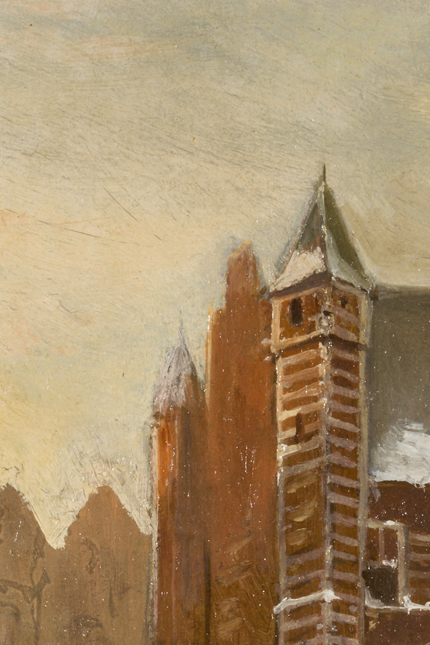 Click for full-size image
Click for full-size imageGEZICHT OP ANTWERPEN MET POORT IN DE WINTER (view of antwerp with gate DRUING winterTIME)
Johan Diederikus Kruseman Jr (1828-1918)
Board, 16,5 x 11,5 cm
Unsigned
Bequeathed by J.M.C. Ising
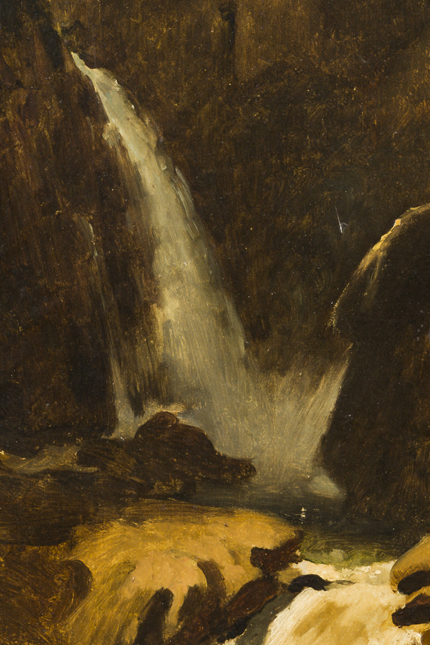 Click for full-size image
Click for full-size imageWATERVAL BIJ TIVOLI (Waterfall near Tivoli)
Painting on panel, 35 x 25 cm
Private collection, Amsterdam, 2010
During the warm summer months, Kruseman and his artist friends often went to the Roman campagna to escape the heat. They travelled to the charming villages and surroundings where they made numerous landscape studies. In the summer of 1822 and 1823, Kruseman visited the city of Tivoli and its famous waterfall. It is not inconceivable that his briskly painted sketch was created there.
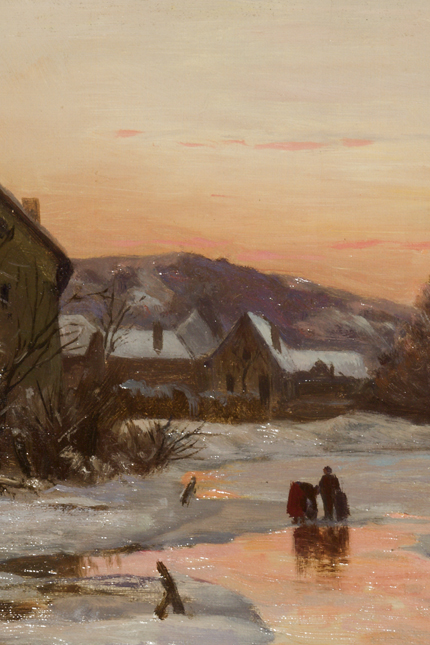 Click for full-size image
Click for full-size imageSOIR D’HIVER À ANSEREMME SUR MEUSE (winter evening in anseremme near the meuse river)
Jan Theodoor Kruseman (1835-1895)
Paint on canvas, 32,5 x 50 cm
Signed ‘J.Th. Kruseman’ (lower right)
Auction in Amsterdam (Glerum Auctioneers), 22 April 2002, no. 128